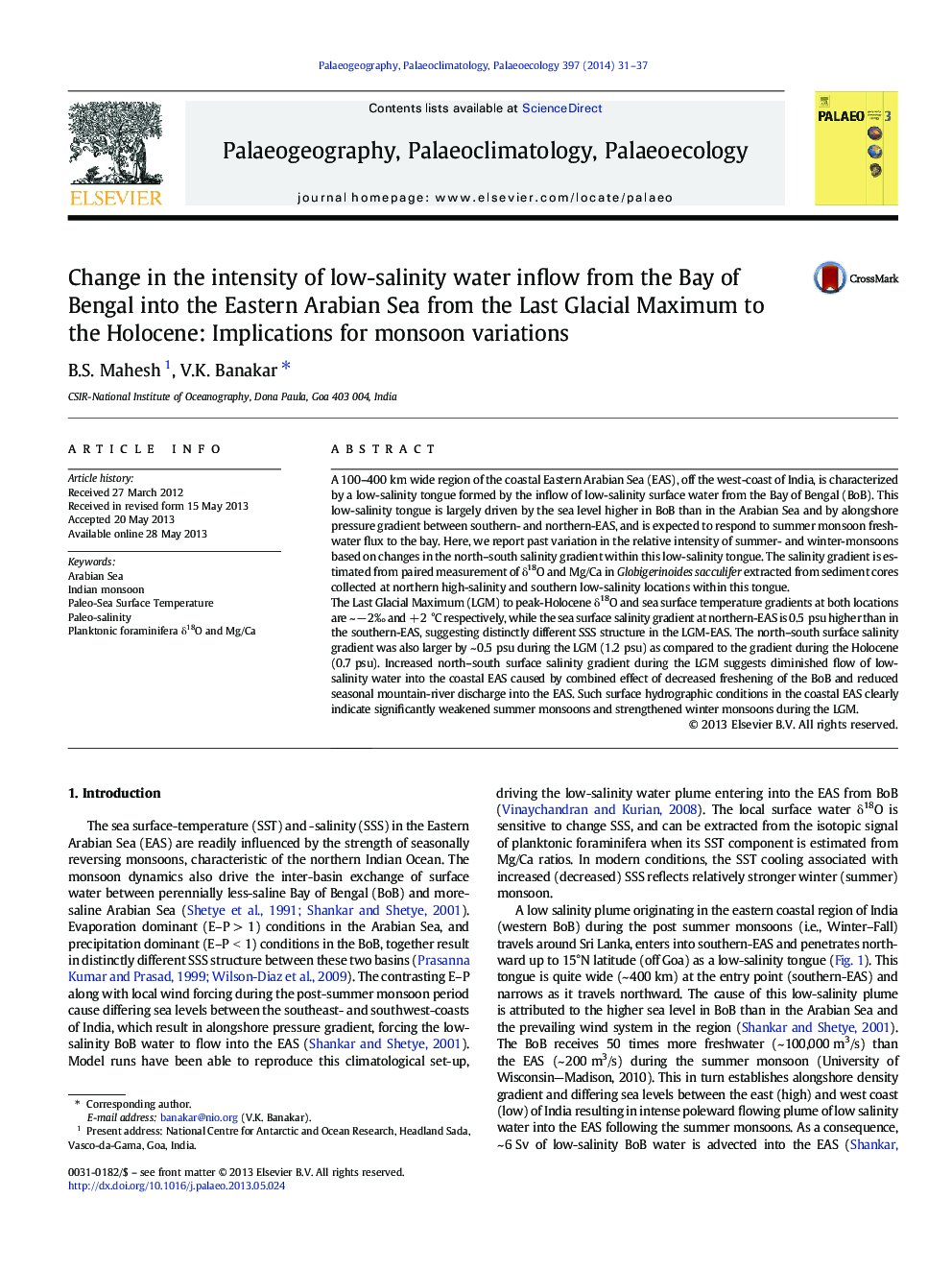| Article ID | Journal | Published Year | Pages | File Type |
|---|---|---|---|---|
| 4466357 | Palaeogeography, Palaeoclimatology, Palaeoecology | 2014 | 7 Pages |
•Past changes in Low-salinity tongue of Eastern Arabian Sea responded to monsoons.•Both in time and space the salinity structure of the tongue was different.•Higher NS salinity gradient within the tongue in LGM suggests weak summer monsoons.•Paired Mg/Ca T and d18O of calcite provide useful information on low-salinity tongue.
A 100–400 km wide region of the coastal Eastern Arabian Sea (EAS), off the west-coast of India, is characterized by a low-salinity tongue formed by the inflow of low-salinity surface water from the Bay of Bengal (BoB). This low-salinity tongue is largely driven by the sea level higher in BoB than in the Arabian Sea and by alongshore pressure gradient between southern- and northern-EAS, and is expected to respond to summer monsoon freshwater flux to the bay. Here, we report past variation in the relative intensity of summer- and winter-monsoons based on changes in the north–south salinity gradient within this low-salinity tongue. The salinity gradient is estimated from paired measurement of δ18O and Mg/Ca in Globigerinoides sacculifer extracted from sediment cores collected at northern high-salinity and southern low-salinity locations within this tongue.The Last Glacial Maximum (LGM) to peak-Holocene δ18O and sea surface temperature gradients at both locations are ~ − 2‰ and + 2 °C respectively, while the sea surface salinity gradient at northern-EAS is 0.5 psu higher than in the southern-EAS, suggesting distinctly different SSS structure in the LGM-EAS. The north–south surface salinity gradient was also larger by ~ 0.5 psu during the LGM (1.2 psu) as compared to the gradient during the Holocene (0.7 psu). Increased north–south surface salinity gradient during the LGM suggests diminished flow of low-salinity water into the coastal EAS caused by combined effect of decreased freshening of the BoB and reduced seasonal mountain-river discharge into the EAS. Such surface hydrographic conditions in the coastal EAS clearly indicate significantly weakened summer monsoons and strengthened winter monsoons during the LGM.
